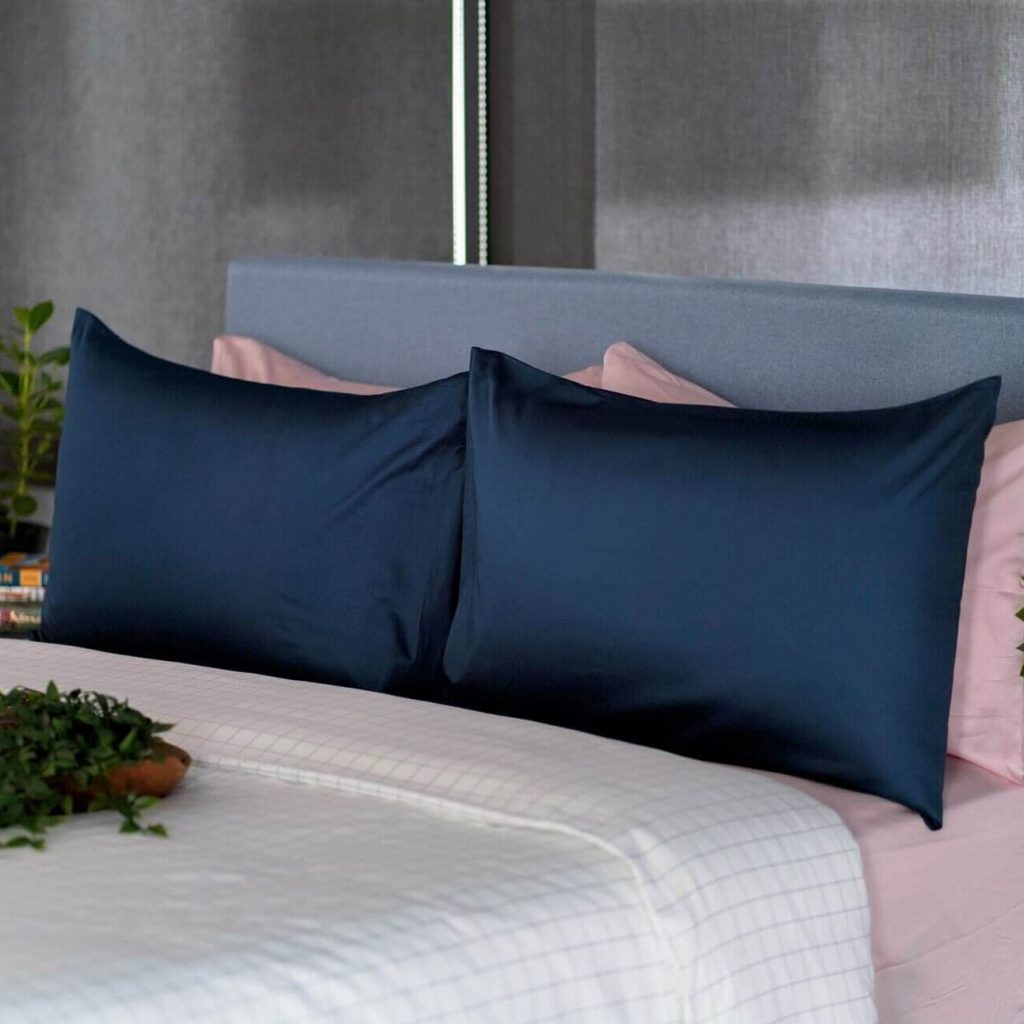How Often Should You Replace Old Pillowcases At Home? - adjustablepillowcase/Blog GitHub Wiki
 We all spend hours each night resting our heads on pillowcases, but how often do we really think about replacing them? It’s easy to assume that as long as they’re clean, they’re fine. But even with frequent washing, pillowcases can wear out or become a hidden source of skin problems, allergies, and more. If you’re wondering when it’s time to let go of those old ones, especially if you’re using cheap pillowcases, this article will help you figure out the right timing.
We all spend hours each night resting our heads on pillowcases, but how often do we really think about replacing them? It’s easy to assume that as long as they’re clean, they’re fine. But even with frequent washing, pillowcases can wear out or become a hidden source of skin problems, allergies, and more. If you’re wondering when it’s time to let go of those old ones, especially if you’re using cheap pillowcases, this article will help you figure out the right timing.
Why Replacing Pillowcases Matters
Your pillowcase does more than just look nice on your bed. It comes in direct contact with your face and hair every single night. Over time, it collects oil, sweat, dead skin cells, and even dust mites. If it’s not replaced on time, it can lead to breakouts, skin irritation, or even worsen allergies. Plus, worn-out fabrics can feel rough and be uncomfortable to sleep on.
Signs It’s Time to Let Them Go
You don’t need a set schedule if your pillowcases are clearly past their prime. Look for thinning fabric, faded colors, loose threads, or a stiff texture after washing. If they’ve lost their softness or no longer smell fresh even after a wash, that’s a sign they’re holding onto bacteria or detergent buildup. Also, if you wake up with itchy skin or notice more acne than usual, your pillowcase might be the culprit.
How Long Do Pillowcases Typically Last?
On average, most pillowcases hold up well for about one to two years, depending on how often they’re washed and the material. Cotton ones may last longer than synthetic blends, while silk or satin tends to wear out faster. If you’re using pillowcases daily and washing them weekly, they’ll wear out quicker than ones used in a guest room.
Material Makes a Difference
The type of fabric really does play a role in how long your pillowcase stays in good shape. Cotton is durable and breathable, but over time, even high-quality cotton will start to pill and wear down. Silk and satin feel luxurious but need gentle handling or they’ll fray or fade fast. Cheap pillowcases might not make it past several months of regular use before they become scratchy or discolored.
How Often Should You Wash Them?
Most experts agree that pillowcases should be washed once a week. If you have oily skin, wear makeup, or sweat a lot at night, you might need to wash them even more frequently. Regular washing helps keep bacteria and allergens at bay, but it also puts stress on the fabric. That’s why you may notice fading or roughness after several months.
Impact on Skin and Hair
Keeping your pillowcases clean and replacing them at the right time can make a big difference for your skin and hair. Old pillowcases can clog pores and trigger acne or irritation. They can also snag or pull at your hair, causing breakage. Fresh, smooth pillowcases are especially important if you’re trying to keep your skin clear or prevent hair damage.
Allergies and Pillowcases
Pillowcases can trap dust, pet dander, and pollen, which can build up over time. Even frequent washing may not remove all allergens if the fabric is old and worn out. If you or someone in your family has allergies or asthma, it’s even more important to replace pillowcases regularly—ideally every 6 to 12 months.
When to Replace Based on Use
How often you use a pillowcase also affects its lifespan. The ones on your main bed that get daily use will need replacement far sooner than ones in the guest room. If you rotate pillowcases and have several sets, they’ll naturally last longer. But if you rely on one or two pairs, they’ll show signs of aging faster and need to be swapped out more often.
Tips to Make Pillowcases Last Longer
You don’t need to toss pillowcases too soon if you care for them properly. Wash them in cool or warm water instead of hot. Avoid harsh detergents or bleach, which can break down fibers. Line drying or using a low-heat setting in the dryer will also help preserve their texture. Ironing isn’t necessary, but storing them folded in a cool, dry place keeps them in better shape.
Why It’s Worth Keeping Track
Pillowcases are often overlooked when it comes to household items that need regular replacement. But since they touch your skin nightly and absorb so much, it’s worth paying attention. Replacing them at the right time keeps your bed feeling fresh, helps prevent skin issues, and reduces exposure to allergens. It’s a simple habit that supports better sleep and hygiene.
Final Thought
Pillowcases don’t last forever—even the ones that seem fine on the surface. By keeping an eye on their condition and replacing them every 6 to 12 months (or sooner if they’re cheap pillowcases), you can protect your skin, breathe easier, and sleep more comfortably. A fresh set isn’t just about looks—it’s about health and peace of mind.